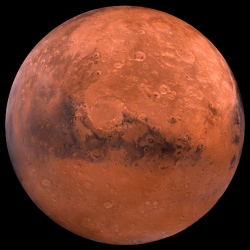
The surface of Mars is lined with mysterious deep-carved trenches. A long-standing theory suggesting that the were left long ago by flowing rivers was just debunked. So where did these trenches come from? Researchers at Johns Hopkins have been studying images of the gullies from NASA’s Mars Reconnaissance Orbiter.
At first, there was nothing to suggest that they hadn’t been etched out by long-ago rivers, like similar features here on Earth
Hoping to get a glimpse of some mineral deposits and clay left behind by the water, researchers overlaid colour composition scans onto existing photographs. But when they looked at their photos, the most recent deposits they could find were small quantities left billions of years ago. There was no sign of the flowing rivers at all.
That doesn’t mean that liquid water doesn’t flow in streams on Mars. We know that it does, because we’ve seen it move across the planet’s surface with the changing of the season:
What it does mean, however, is that there’s even more evidence to back up a study from earlier this year that suggested water quantities on Mars had long been much sparser than we believed.
In that study, researchers showed that we had overestimated the amount of water flowing on the Red Planet due to a single missed fact. Until this year, no one knew that flowing water on Mars also boils on the surface, making it appear to be deeper and more turbulent than it is in reality. While there’s still enough water to flow even today, it’s nothing like the kinds of deep, flowing rivers that would be required to carve out those gullies.
That does, however, leave an outstanding question. If not water, what did dig out those deep trenches? Alas, there are no bulldozer-driving aliens behind them. Instead, researchers suspect that the force that dug them out may have been simply, and less dramatically, a carbon dioxide frost freezing and thawing over and over again across millions of years. Their next step is to try and confirm that suspicion.
